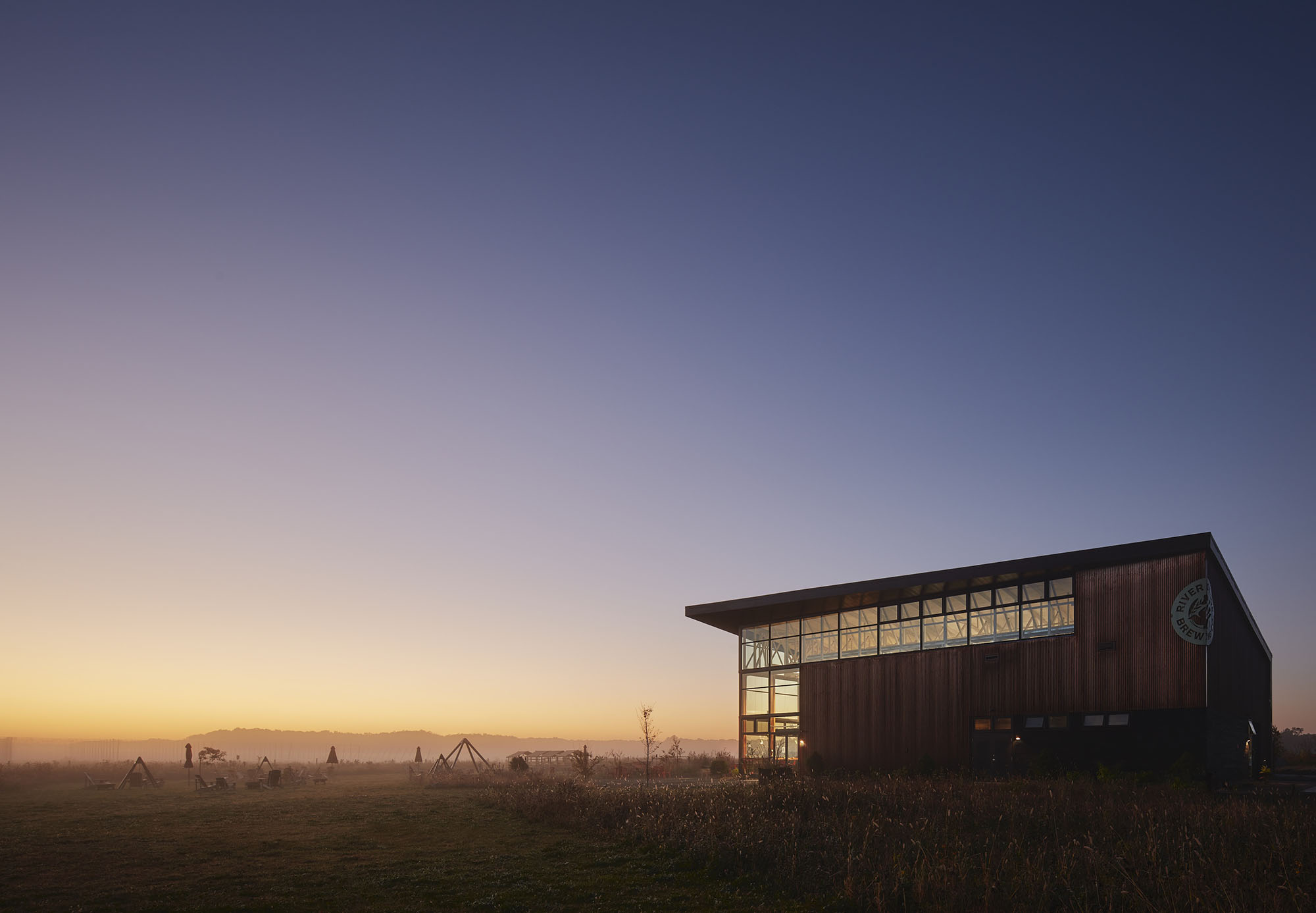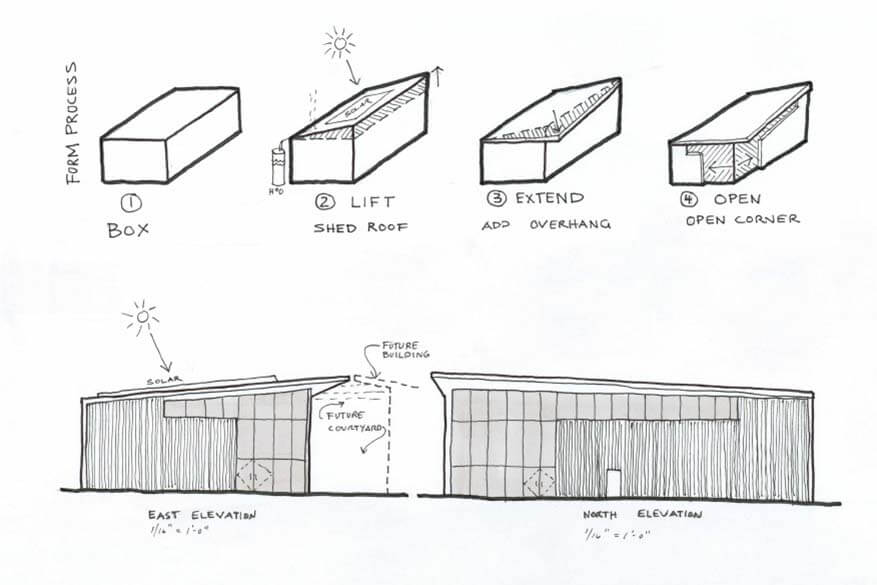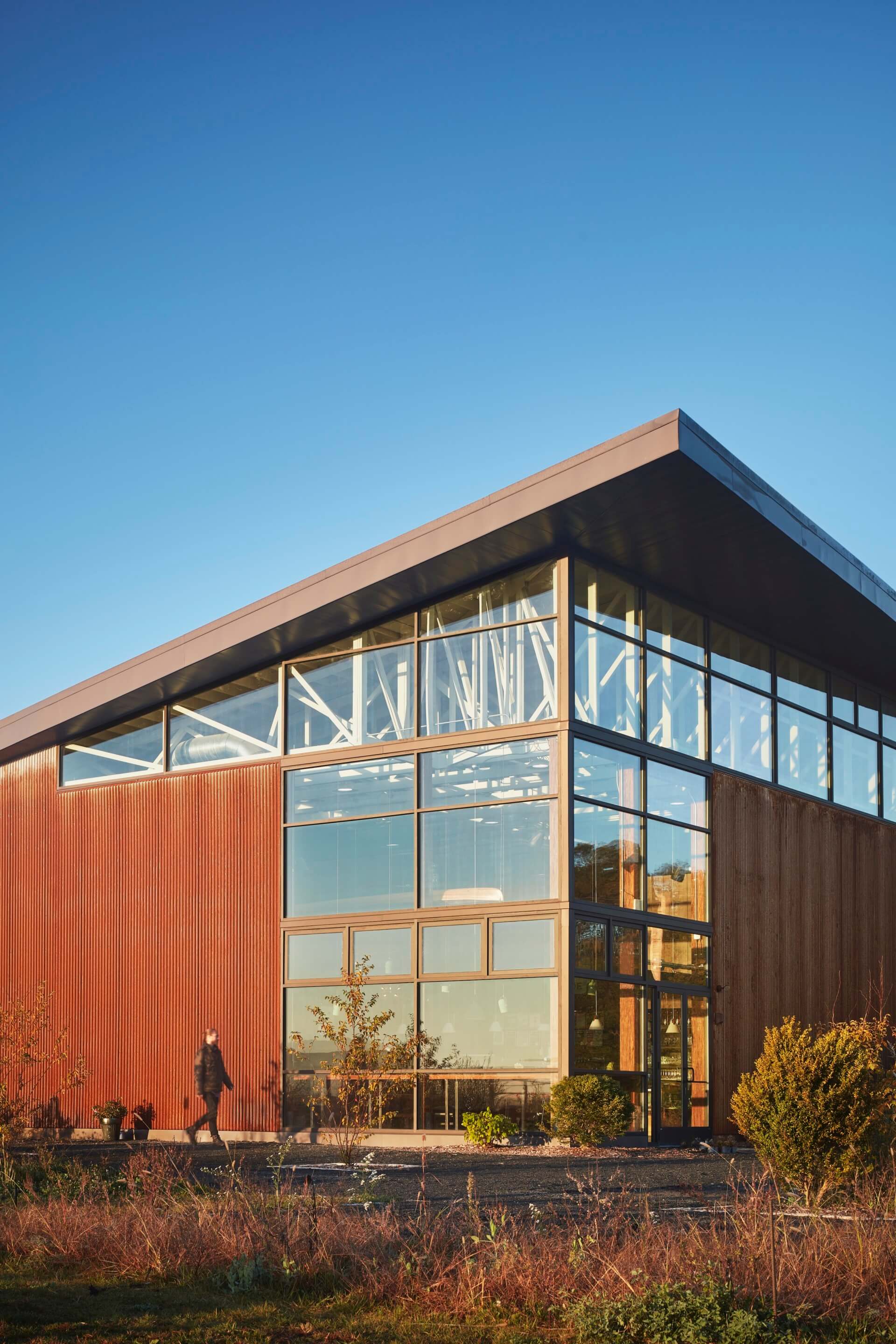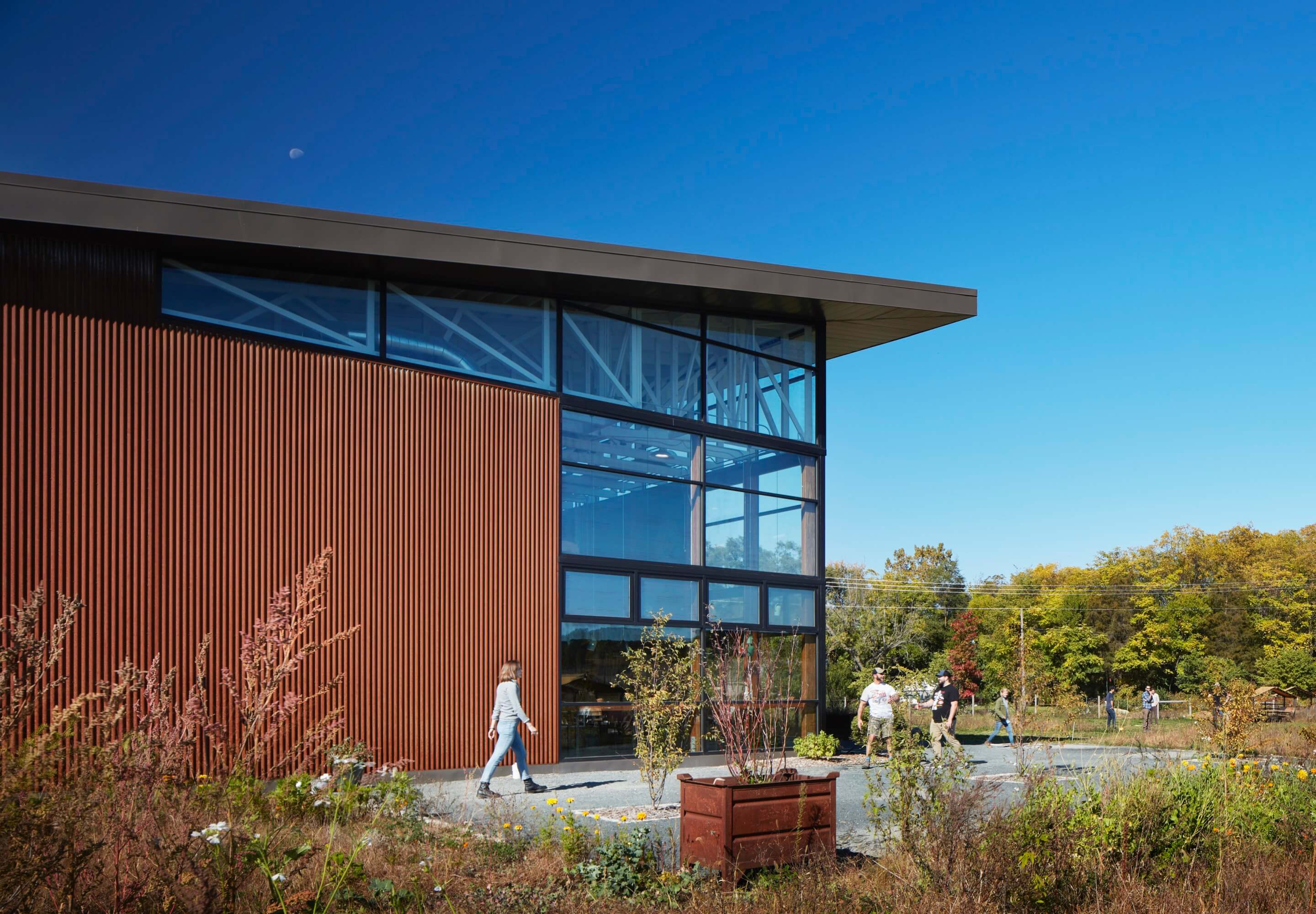
- Architect
moss Design - Location
Buchanan, Michigan - Completion Date
2019 - Structural Engineer
Rockey Structures - General Contractor
Holladay Construction Group - Window Systems
Tubelite - Structural Insulated Panels
Thermocore - Truss Manufacturer
Big C Lumber - Light Fixtures
Halo, Lithonia, Kichler - Plumbing Fixtures:
American Standard
Evoking the rural Midwest’s industrial architectural vernacular, moss Design’s River Saint Joe Brewery is a contemporary take on an energy-efficient pole barn. Designed for a farm-to-table microbrewery, the project integrated local materials and made the most of its site in Buchanan, Michigan.
The need to update the traditional pole barn design largely stems from the fact that pole barns are not site-specific. Historically, there were advantages to this in terms of manufacturing and cost, but shortcomings in energy efficiency, making the buildings more costly over time. By taking the traditional pole barn design—essentially a rectangular prism—and lifting the roof on one side, extending the lifted end to an overhang, and opening a corner of the facade, the River Saint Joe Brewery took its shape.
The facade is largely Corten weathered steel, and in this case, corrugated. The cladding is typical of industrial buildings in the region, and given the surface area of the facade, a panelized sheet siding was cost-efficient. Charred cedar was added to smaller door and window openings, and provides a more “human scale,” according to moss founder Matt Nardella. The siding was attached to structural insulated panels (SIP), which comprise the wall between the poles, via furring strips, forming a rainscreen assembly. Glass opens the Corten at one corner, and wraps around the section of the upper level that is directly under the overhang.

Given the rural site, the construction process was planned to be “as modular as possible.” The posts, roof trusses, and exterior SIP walls were fabricated off-site and only had to be lifted into place and attached upon delivery. The roof trusses were manufactured by Big C Lumber, and the SIP walls were manufactured by Thermocore. The 48” rhythm for the poles and trusses is the same as in a traditional pole barn, with energy efficiency coming largely from the roof and overhang. The siding was installed like a normal rainscreen assembly, making for an uncomplicated installation.

The facade is punctuated by the overhang, which slopes south to optimize the solar array on it, which powers the brewery. By orienting the building, and particularly the roof, to maximize sunlight for the solar panels, the modernized pole barn compensated for the lack of electricity connections near the site. The roof also accommodated the height necessitated by fermenters, brew tanks, and associated equipment required by a brewery, as well as an office, restrooms, and kitchen. The overhang is deepest at the glazed corner, with custom outriggers forming a unique roof shape and protruding from an otherwise flat facade.

Apart from cost-efficiency, Corten and charred wood also develop a patina over time and reflect light well. Rather than designing a structure that is aesthetically appealing for its opening, moss Design’s River Saint Joe Brewery will gracefully age while providing an energy-efficient adaptation of vernacular Midwestern industrial architecture.





